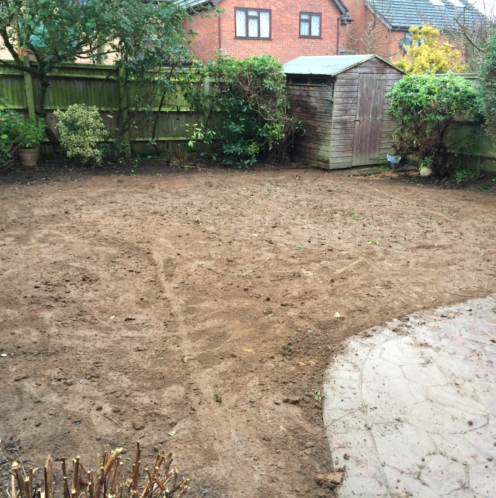Artificial Grass Drainage Frequently Asked Questions
Is drainage important for artificial grass? Definitely! It is crucial that rainwater is syphoned away from the grass, or you’re likely to end up with bothersome pools of water lying on the grass, every time it rains, or when you water your plants!
If the artificial grass isn’t installed with drainage in mind, the life expectancy of your grass will be shortened considerably if you live in areas of high rainfall. The pools of water can make the grass look unlevel in some places and, of course, children and pets won’t be able to play on the grass without getting wet!
The grass itself should be fully permeable so that rainwater can run straight through it to the sub-base, however, it’s the sub-base installation that potentially poses problems. Good quality artificial grass, when installed correctly, should drain rainwater through a drainage base below the levelling layer (sand). Not installing this layer is typical of a poorly installed lawn so you’ll want to make sure you prepare your base thoroughly before laying your grass.
Most good installers will excavate the old current grass layer and remove the debris before laying an aggregate subbase on top of the soil. It is this base that acts as the drainage!
Generally, we would advise laying a type 1 limestone aggregate that acts as the drainage layer before sharp sand is laid and compacted.
To find out more detail about the installation process, view our how to lay artificial grass page here.
This method of drainage would solve most issues and eliminate the need for an expensive drainage system to install. It is only in very severe cases that you may need to fall back on an expensive drainage system as a last resort!
Will all artificial grass allow water to pass through?
Unfortunately, many installations from ‘experts’ have been below the standard at which artificial grass should be safely and efficiently laid. Common issues such as lack of preparation, insufficient depth of soil, or simply the wrong drainage aggregate use are common occurrences! Don’t get caught out!
Should all artificial grass be laid on soil, aggregate and sand?
The only other alternative to the soil is concrete slabs or paving which is, of course, commonplace in the garden. In this case, the existing slabs should be as level as possible and still in good condition before you consider laying artificial grass. Sometimes, installers would law a shock pad layer to be between the grass and concrete to ensure that the surface is softer, however, this alone won’t drain the grass. For more information on how you can lay artificial grass on concrete, get in touch with us on 01732 323 122.
Conclusion
By carrying out a full excavation of the existing surface, any reputable installer can tell you how much drainage you should be laying to prevent any flooding issues!
Remember, not all installers will carry out an artificial grass installation the same way. You should also read reviews, speak with existing customers and do your research before you hire someone to install your lawn!

Related topics
- How to Choose Artificial Grass
-
Read More
What is the best artificial grass? Find out how to choose artificial grass
- How to lay artificial grass
-
Read More
How to lay artificial grass
- Artificial Grass Tools: What tools do you need to fit artificial grass?
-
Read More
If you’re looking to install an artificial lawn yourself, it’s important that you have the right equipment to get the best results. Find out which tools you need to install your new artificial lawn here.


